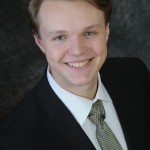 Benjamin Kaiser
Benjamin Kaiser
Bethel University
Sophomore, Physics
Expected Graduation: May 2018
Host Lab in Japan: Endo Lab, Shinshu University
Research Project Abstract and Poster: Hydration Analysis of Carbon Nanotubes/Polyamide Nanocomposite Thin Films ![]()
Why Nakatani RIES?
The Nakatani RIES Fellowship, to me, is an outstanding opportunity to both conduct significant research in cutting edge labs and experience the rich history, culture and language of Japan. This is one of the few programs that are geared towards underclassmen with little research experience AND provides an opportunity to travel abroad. I believe that is what makes this program uniquely global and beneficial to undergraduate student who are pursuing physics and engineering.
I applied for the Nakatani RIES Fellowship because this opportunity truly combines both my passion for physics and my love of Japanese language and culture. Being an Asian Studies minor, this program complements my academic goals and allows me to actually experience one of the cultures I am studying first hand. As for the research portion of the program, I hope to gain experience and identify what field(s) of scientific research that I would like to pursue. Also I believe research experience in other cultures provides an opportunity for students to work and learn alongside people who have vastly different cultures and life experiences which can lead to innovative solutions that may not be apparent from one viewpoint. Ultimately, I am excited for the opportunity to study in Japan because I am know it is important for students to gain international research experience as scientific research is a worldwide endeavor.
Goals for the Summer
- Gain a deeper understanding of Japanese culture and language
- Be able to hold a conversation in Japanese
- Build relationships and connections with people in the Japanese scientific community
- Work as an international team to advance our research
Research Internship Overview
My research included a lot of applied chemistry, which was quite a change for me. My major is Physics, and the last chemistry class I took was during high school. However, I had a great time researching this topic and learned so much about organic chemistry, as well as the history of Nanoscience. I never thought I would enjoy chemistry as much as I did, and now as I continue my undergraduate education, I plan on taking more chemistry classes. Additionally, I think I would potentially like to pursue a career in chemistry and nanoscience.
I was in a bit of an interesting situation, where I was technically part of two labs which were all overseen by Endo-Sensei. The first lab, Hayashi-Sensei’s lab included about 25-30 students ranging from bachelor programs to doctoral programs. The second was on the 7th floor lab in the Center of Innovation (COI) building (Everyone just refer to it as COI 7th floor), which is where the main portion of my research took place. However, it was a very different environment in the COI. The lab consisted of all full-time researchers who were at least in their 30s-40s years of age. It was a much more professional setting than the other lab. Despite that, my mentor, Dr. Rodolfo Cruz-Silva was a very laid back guy. He, and three of the other researcher were originally from Mexico so it was a very international lab setting. Since the COI lab was all older people, we didn’t socialize too much outside of our interaction in the lab, but the students in Hayashi-Sensei’s lab and I spend quite a bit of time outside of work together.
Daily Life in Japan
Most weekdays I would start my day off with walking to the lab, which was only about a one-minute walk away. This was very convenient and cut down on the cost of living because I didn’t need to pay for transportation. In the morning, I would start working on my project for a couple hours until lunch. Then I would usually have lunch with some of the students in the cafeteria, or purchase food from the grocery store to cut costs. After lunch I would continue working until 8:00-9:00 pm when Dr. Rodolfo Cruz-Silva, my mentor, would usually check in on how my research was going. I would then leave the lab anywhere from 9:00 pm to 1:00 am depending on the day.
My favorite experiences in Japan were … going to Kyoto for the mid-program meeting and spending the weekend in the mountains of Nagano.
Before I left for Japan I wish I had … previously purchased Microsoft Office for my computer
While I was in Japan I wish I had … been able to go to Sendai.
Excerpts from Ben’s Weekly Reports
- Week 01: Arrival in Japan
- Week 02: Trip to Akita
- Week 03: Noticing Similarities, Noticing Differences
- Week 04: First Week at Research Lab
- Week 05: Critical Incident Analysis – Life in Japan
- Week 06: Preparation for Mid-Program Meeting
- Week 07: Overview of Mid-Program Meeting & Research Host Lab Visit
- Week 08: Research in Japan vs. Research in the U.S.
- Week 09: Reflections on Japanese Language Learning
- Week 10: Interview with a Japanese Researcher
- Week 11: Critical Incident Analysis – In the Lab
- Week 12: Final Week at Research Lab
- Week 13: Final Report
- Tips for Future Participants
Week 01: Arrival in Japan
WOW! Tokyo is a big city. I have never been to an actual “big” city before. I thought the Twin Cities were large but they hardly compare. I had been told many times that Tokyo is very clean but I didn’t really believe it. Nevertheless it was true and not a garbage can in sight.
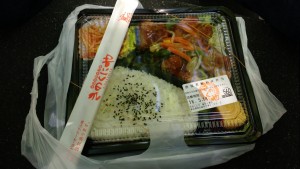
Even though I had never been to Japan I had very high expectations and hopes. Not surprisingly these expectations were blown out of the water. Japan is so much more amazing than I ever expected. The food is delicious, particularly the Udon, and very cheap for how good it is.
It has been hard and easy to learn Japanese. Japanese grammar seems pretty simple so far because the lack of connecting works and substituting particles to indicate what each work plays in a sentence. Despite that, learning when to use each particle and the vocabulary has been difficult. I have been trying not to associate Japanese vocabulary with English words rather associating it with the idea of the object because I was told this is the fastest way to learn a language well (I have no facts or proof to back it up but it makes sense to me).
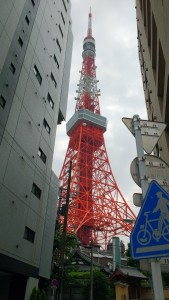
My overall experience in Tokyo so far has been awe. Its is such a big and well-oiled machine. Additionally the people here, in my experience, have been very helpful and kind. One example of this was one evening I went for a run and I got pretty lost. A policeman came up to me and I was afraid he was going to take me to the station or something but he asked me if I was lost and helped me find my way back to the Sanuki Club. In terms of lectures and discussions, I think they have been going very well. I’m glad that i had just finished my sophomore year and taken optics and modern physics because I would be completely lost with that knowledge of quantum mechanics. I felt a bit bad at the political discussion, I didn’t have too much to add and I don’t really have strong opinions about politics, but it was interesting to hear about American Politics from an outside perspective.
Question of the Week
Something that has piqued my interest is the interesting use of Kanji. Sometimes Kanji is used for a word and sometimes it isn’t and I’m not sure if it means something different even if it is the same word?
Introduction to Science & Engineering Seminar Overview
This week we only had one science lecture from Prof Kono. He began by reviewing the basics of resistance and how it is effected as well as some interesting variables that can change the resistance/conductivity such as temp, electron and hole mobility, band gap, and electron density. From there we went into what makes make a metal a metal, insulator an insulator and a semiconductor a semiconductor which is the band gap.
Further down the rabbit hole, Prof. Kono discussed how quantum mechanics relates to these phenomena and every field for that matter. This lead into Nano electronics, nano photonics and photon confinement. As I stated earlier it was nice that I had just taken Modern Physics and Optics because I felt like I was able to keep up pretty well.
Initial Research Project Overview
- What is the material you will be using or studying in your research internship?
- For my research I will be studying carbon nanotubes.
- Is it a metal or a semiconductor?
- A carbon nanotube can actually be both a metal and a semiconductor depending on how the graphene that is used to make it is folded.
- What is its characteristic dimensionality? Is it a 0D, 1D, 2D, or 3D system?
- They are consisted a 1D system because the two dimensions that incorporate the radius are smaller than the thermal Debroglie Wavelength.
- What properties will you be mainly studying – optical, electrical, magnetic, thermal, or mechanical properties?
- The property that I will be studying this summer are electrical or Mechanical (I think). One of the possible projects involves double walled carbon nanotubes and examining the conductivity of these structures. The other two possible projects are using carbon nanotubes as a replacement for conventional RO water systems.
- What is the main experimental or theoretical method or technique you will be using?
- We will be testing the Flux, rejection Rate and Chlorine degeneracy of the Multi-Walled Carbon Nanotube – Aromatic Polyamide membranes or the conductivity of MWCNT.
- What possible applications does this material have?
- As for the conductive double walled carbon nanotubes, they would help make electronics more efficient with less loss. And for the RO water treatment, it would be more efficient and more resistant to chemicals potentially making large scale RO systems much cheaper to run and maintain.
Week 02: Trip to Akita
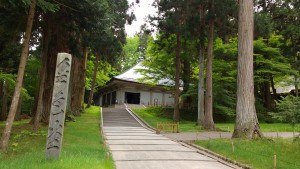
After a long Shinkansen ride our first stop was Motsuji, which was the site of a grand temple that had burned down. Nevertheless, we were able to see the grounds where the amazing building once stood. From there we took to Hiraizumi which held the golden Chusonji temple. The temple was surrounded by a concrete structure to protect it from the elements, but this was only a recently made enclosure. I was impressed by the good condition of the temple, despite being almost 1000 years old.
Once we finished our historical tour of Akita, we went to the Ryokan where we spent the weekend. I have always wanted to stay at a Ryokan, so this was a dream come true. The tatami mats and futons were surprisingly comfortable, which I was not expecting, but it helped me get some much needed rest away from the packed schedule we had the first week. In addition to the rooms being amazing, the Onsen was the coolest place ever. I have never felt so refreshed and clean after a bath before.
The next morning, we went to Lake Tazawa where Youssef, Donald, and I went rowing. None of us realized how hard rowing actually is until we were adrift in the lake. I certainly don’t mean to complain, because we were surrounded by such a beautiful blue lake and mountains as far as the eye could see. Once we were finished at the lake, we headed to Omagari Agricultural High School. While there we were given a presentation about the problems Akita is having with the agriculture industry, such as lack of youth interest in the field () and declining rice demand. Then the Omagari Agricultural High School students gave a presentation about their research into saving Lake Tazawa by reducing its acidity. Finally we, the KIP students, the high school students, and the Nakatani Fellowship students, had a discussion about if and how industry skills should be taught in primary school.
The following morning, we had one last presentation from the owner of the Ryokan who talked about the tourism industry in Akita, and their challenges and efforts to increase tourism. Our group talked a lot about how we could get the whole community involved in making Akita the place to go for vacation which included: marketing titles such as Lake Tazawa being the deepest lake, uniting the tourism agencies in Akita to serve a greater goal, and getting students involved to attract young people to the area. Additionally, we discussed how there needs to be a balance because attracting foreigners to the area could degrade the wonderful culture that already exists.
The discussions, with the high school students about industry integration in schools, and the with the KIP students about getting people to Akita, had the biggest impact on me. This is mostly because my family came from a small farming community in southern Minnesota where farming education was built into the school curriculum, even at the preschool level. Since moving from southern Minnesota to the twin cities of Minneapolis and St. Paul, I had always thought it was a bad thing to have industry specific education in schools because it seemed like coercion. After listening the the presentation and talking with the other students, it seems having that sort of integration in schools would benefit many people, particularly those who are interested in that industry. We discussed how these activities should be mandatory for younger students so they are exposed to the different fields. Then in high school make these types of activities optional to students so only those who are truly interested have the option to participate.
This biggest challenge during the trip was the language barrier. Unlike Tokyo, a very international place, Akita was much more rural which meant not as many people spoke English. This caused some issues when I was trying to buy a gift. The clerk only knew Japanese, and I had only one week of our Japanese crash course. She was saying things I had not learned yet. Luckily, of the KIP students came to my aid. In addition to the store clerk, interacting with the Omagari Agricultural High School students was a bit difficult. They didn’t speak much English and seemed to be very nervous. After a while they seemed to relax a bit and with the help of the KIP students, we were able to have a pretty good discussion.
What had the biggest impact on me was the presentation from the Omagari Agricultural High School. It was amazing and refreshing to see a group of students so dedicated to a cause like theirs, rectifying Lake Tazawa. Their determination to save the lake was inspiring and I wish them well in their endeavors. I feel like the high school students are a keen example of how Japanese people think of nature. This might be taking the Wa element a bit far, but I feel like the harmony that exists in Japanese culture also extends to nature. The students attempting to find a way to restore Lake Tazawa to a habitable place for fish shows a deep commitment to this.
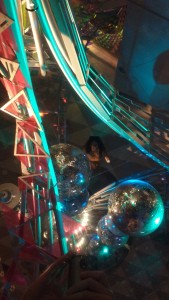
On this trip I learned a lot about passion and drive. Seeing how the high school students have strived and continue to work hard to fix the lake makes me want to try as hard. Additionally, I have gained some peace of mind. I was terrified that this summer I would fail completely and disappoint Endo-sensei, but .
Week 2 Overview
We started getting to more than just survival phrases in the Japanese classes, which is really exciting. The grammar, thus far, seems pretty straight-forward but remembering all of the nouns, adjectives and verbs we have learned has been a bit more tricky. The science lectures this week were again, very engaging. Personally, the most interesting talk was that by Kunie Ishioka. She was a very strong woman and had great information about gender in the sciences. A group of us made it to the Sunshine City mall where we were able to go to the Pokecenter. Additionally, we went to the Sky Circus on the 60th floor of the same building. It was an expensive ticket for what we thought was just an observatory but we got much more than we bargained for.
Week 03: Noticing Similarities, Noticing Differences
One of the first rules on the subways I noticed pertained to the noise level. Unlike on American public transportation which is usually quite loud, the Japanese public transportation was pretty quiet. This held true even during the morning and night rush hours. As for sitting and standing protocol, there was an obvious rule of offering your seat to those who need it (There were many signs about this). More on an unwritten level, it seemed that if someone’s stop was one or two stations away they would never sit and usually congregate near the doors but never blocking them. Finally, I noticed the way people line up for the subway at the station. Most stations didn’t have lines where people getting on should stand but most people knew where to stand anyways. The people getting on seemed to make a V shape with the door at the point. They would fill in everywhere but inside the V so the people getting off of the subway would have no trouble doing so. America where it is essentially a free for all.
Most younger people, under ~40 years old, would be on their phones playing games or messaging people. Older people would usually just sit and think or quietly talk to their fellow elderly folk. As for all ages sleeping was very common as well. I was very surprised about how Japanese people seemed to always wake up just in time to get off at their stop. It made me wonder if they were actually asleep and just that in sync with the subway schedule or if they were just closing their eyes to relax.
I don’t think I have ever taken public transportation in Minnesota but when in Washington D.C. was able to use their subway system. One big thing I noticed right away was how much cleaner and modernized the subways were in Tokyo. Not only that but much more efficient in both the people moving respect and the punctuality of each train.
I would say that many of the differences were definitely for practical efficiency such as the the places people stand to get on and where people are in the subway. But I feel like this is getting at a cultural difference as well. Japanese culture, as we learned, has a lot of respect for others built in. One form of this respect is punctuality, the efficiency of the public transit system not only respects the commuters’ time but also allows for the commuters to be prompt and respect the time of others as well. I think this ties into Wa (Harmony) because everyone is working for the same goal, so respecting others time and being prompt makes things flow much better.
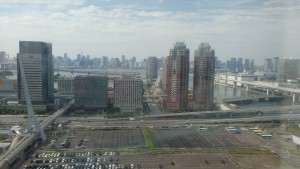
Despite having lecturers every day, week 3 was much more relaxed. With this week of science lectures done I feel like I finally understand the physics behind semiconductors. By that I mean it all came together this week. As for the other lectures, I never realized that so much of Shinto and Buddhism was built into Japanese culture and yet many Japanese wouldn’t consider themselves religious.
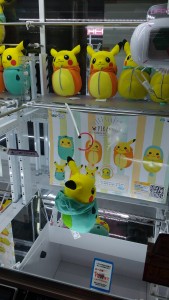
My highlights of this week’s exploration of Japan were going to Akihabara and Odaiba. Rony and I, on our last day, went to Akihabara to see some antique gaming stores. There were old and new technology shops everywhere. We ended up spending most of the day there. The previous day, six of us went to Odaiba. It is amazing that the whole island is made of compacted trash! While there, we were able to see the Toyota show room, ride the Ferris wheel and go to leisure land (an arcade). After spending too much time and too much money I was able to win one of the crane games a get a pikachu wearing a raichu hoodie.
Return to Top
Week 04: First Week at Research Lab
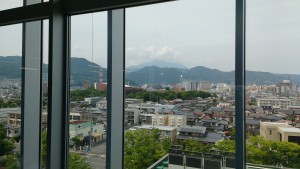
On the first day of my stay in the Endo Lab at Shinshu University, I was picked up from the shinkansen station by Dr. Takizawa and Dr. Fujishige. Once we arrived at Shinshu University, I met Kurata-San, Endo-sensei’s secretary. She showed me around the dorm, Ohta International Hall, where I will be staying. It’s a relatively small dorm with only three rooms and a common area. Nevertheless, the rooms and common area are very big, each having its own bathroom. My dorm is on the same campus that the labs are, so it’s usually a couple-minute walk to either lab, which is very convenient.
After finishing our tour, we meet back up with Dr. Takizawa and Dr. Fujishige as well as three other master students, who I will be working with this summer, to have lunch. Finally, we went to go see Endo-sensei. At this point my heart was pounding because I didn’t want to make a bad first impression. Endo-Sensei turned out to be a really cool and funny guy. He seemed very excited for me to be at Shinshu University and made me feel very welcome.
Once the meeting concluded, three of the master’s students showed me to Hayashi-sensei’s lab where I met many of the other master’s students as well as Hayashi-sensei. Finally, I was taken to the new building where I met Rodolfo-sensei and was briefed on safety and started my research that day. Once Thursday came around we had my official welcome party. There was tons of delicious foods to try. Also I gave a presentation on where I am from and my home university.
My main supervisor/mentor is Rodolfo-sensei and my other supervisor/mentor is Hayashi-sensei. Rodolfo-sensei is originally from Mexico but now is a full time professor at Shinshu University. He speaks English very well and has been very welcoming to me. The others in Rodolfo-sensei’s lab are a very international group of mainly post-docs and associate professors. At least 3 of the other researchers are not native Japanese. Because of this, the main language used in the lab is English. Hayashi-sensei is a native Japanese. He still has fairly good English and always has a smile on his face. His research group is mainly undergraduates and master students. The main language spoken in this lab is Japanese because many of the students don’t know much English. It has made communication a bit harder, but they are certainly willing to try to communicate and understand my broken Japanese.
I have begun my research project. Although most of what I have done so far is research, I have spent some time working in both labs. In Rodolfo-sensei’s lab I have been able to try a couple methods of synthesizing PA films with some fairly good results, but there is still a long way to go. In Hayashi-sensei’s lab I have been able to synthesize double walled carbon nanotubes but have yet to characterize them.
Orientation Program Overview
Now that you are in your labs, briefly reflect on the overall experience of the Orientation Program.
I feel like the orientation was very helpful and a lot of fun. The Japanese classes were wonderful, and the teaching staff made it very educational and fun. I feel like I learned more of a second language in those 3 weeks then my 3 years of German classes in high school. I really enjoyed the science lectures, although sometime I had trouble keeping up, they were very engaging
The most interesting thing that I learned about Japan was in the last presentation by Packard-sensei. I found it very intriguing that so much of Shinto and Buddhism is wrapped into Japanese culture, yet not many would consider themselves religious.
I have really enjoyed learning Japanese. I can speak very very broken Japanese as of right now, but I am continuing my language learning by studying on my own. My goal is to be able to have simple conversation with my lab mates and be able to recognize (and maybe write) 50 kanji!
Question of the Week
I wonder why it is that so many people in Japan aren’t religious, or at least claim not to be?
- You may want to read “Japan, the most religious atheist country” for more on this topic.
Research Project Overview
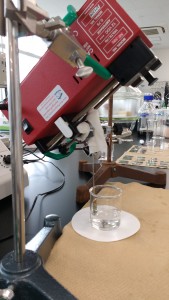
During this summer I will be working on creating Graphene, Double-Walled Carbon Nanotube (DWCNT) and Multi-Walled Carbon Nanotube (MWCNT) Polyamide (PA) Membranes. The first main issue I am addressing is the method of gathering the PA membrane without wrinkling on a silicon substrate. The second main issues I will be addressing is the means of adding the DWCNT to the membrane with an even distribution. Finally, with those processes perfected (fine-tuned) we hope to experimentally show the effect that Graphene, DWCNT and MWCNT have on the structure of the of the PA membrane.
Research Methods: I will begin by creating PA membranes using trimesoyl chloride (TMC) in organic solvent (hexane) 0.1% by weight and m-phenylenediamine (MPD) aqueous 0.1% by weight. Since the two solutions have a large enough difference in density it is easy to layer them in a beaker. At the boundary between the the solutions the film is created whose thickness is determined mainly by the time of reaction and concentration of the TMC and MPD. Using a concentration of about 0.1% by weight should yield around 100 nm thick films.
Once the film has been created, the trouble now is collecting on a silicon oxide wafer without wrinkling. This could be achieved in many different ways, and is one of the main focuses of my project. Once a method that yields smooth films is found, we will add DWCNT to the mix. The main issue I will focus on is even distribution of DWCNT in the PA membrane. This will likely be done by dispersing the DWCNT in one of the two solutions before reacting them them to create the film. One major issue with using conventional means of dispersing carbon nanotubes (CNT) in a solution, ultrasonication, is that the inner CNT can slide out, resulting in different sized single walled carbon nanotubes rather than the desired result. I am not sure at the moment how we will remedy this, but I will continue doing research to get ideas.
As for the DWCNT creation, they can be made with high yield in Hayashi-sensei’s lab using a technique of heating, chemical vapor deposition, and arc discharge developed by them. They will be characterized and then used in what is described above.
Finally, once we have good samples of PA membranes with Graphene, DWCNT, and MWCNT, we will use IR spectroscopy, optical microscopy, Raman spectroscopy, SEM and possibly more to experimentally show how the structure of the PA membrane is altered with each of the added materials.
Training: I will need training in using the equipment to characterize both the MWCNTs and the PA membranes I will create. As well as general safety in the both labs. I have received training on safety as well as on a couple of the machines I will be using.
Week 05: Critical Incident Analysis – Life in Japan
So far nothing too crazy has happened to me with regards to cross cultural communication issues outside the lab. Nevertheless there have been a couple small misunderstanding. The most notable of which was while I was at Watahan, a home goods store, this last week. I was trying to find a USB drive so I could transfer some files from one of the labs computers to my own. I saw that the USB drives were behind a counter where a store clerk was standing. I tried to tell him that I would like a USB drive in Japanese and pointed at the ones behind the counter. He replied, but I was not able to understand it, and pointed to a different area of the store. I was a bit confused and I asked him if he spoke English to which we he replied no (In Japanese). Still not knowing what to do, I repeated that I wanted a USB drive and again he said something I didn’t understand and again pointed off to somewhere else in the store. After a bit more of our back and forth, he motioned to me to follow him and led me to the place he had pointed. Over there were little cardboard tags with pictures of USB drives on them. It then became clear that one must get one of those and bring it to the counter where the clerk with give you that USB.
I felt bad for all of the trouble I had cause the clerk and made sure to apologies. At the time I was thinking that the USB drives were right there so what could he want me to go somewhere else for? I thought that he must have been misunderstanding what I wanted but In reality I was the one misunderstanding him. The big thing that I took away from this experience was that I shouldn’t try to think that I know what’s going on all of the time and listen to other people. It was quite apparent that I didn’t know what was happening at all in this situation and it wouldn’t have been an issue if I had followed what the store clerk had motioned towards.
Question of the Week
Some of my coworkers show up before me and leave after me and always have so much energy and I’m dead tired. How do they work so hard and work so much?
Research Project Update
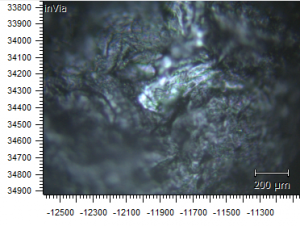
This week was mainly focused on the synthesis of double walled carbon nanotubes (DWCNT) with Kong-san, a doctoral student in Hayashi-sensei’s lab. The process of creation and refinement was created by their lab. We started with CVD to create the carbon nanotubes. This took most of Monday and had to be monitored periodically. After letting the carbon nanotube, MgO, and FeO powder cool overnight, we began a 3 hour heat treating to purify the sample. After which the powder was mixed with water and HCl was slowly dripped into the solution. The HCl would react with the remaining magnesium oxide and create magnesium chloride and water (MgO(s) + 2HCl(aq) –> MgCl2(aq) + H2O(l)). Once the solution was allowed to sit overnight the contents were vacuum filtered to remove the HCl, MgCl2 and water, leaving us with a powder consisting of DWCNT and the remaining MgO. The heat treatment and HCl reflux were repeated again to increase the purity of the sample
Now that the DWCNT are complete, I can add them to the PA membranes I have been working on. So far I have been able to get fairly flat membranes. To the eye it is very hard to tell that it isn’t flat. Under a microscope however there are apparent defects such as wrinkles, thickness variations, and particles in between the membrane and substrate.
To address the first and second issue, I have been working on finding the optimal speed for the membrane to be removed at. If the membrane is pulled too fast it tears on the micrometer level or if too slow then there are many more wrinkles and much more variation in thickness. Additionally it seems that the optimal speed changes (Is faster) with the addition of multi-walled carbon nanotubes (MWCNT).
Finally to deal with the particles that are underneath the membrane, I have been very thorough in clearing the silicon oxide substrates with ethanol before applying the membrane. However this next week I would like to try some techniques have read about, such as sonication in acetone. It is also likely that some of the particles could be MPD crystals that were left behind from applying the PA membrane. One possible solution is to very carefully wash the PA membranes in a water-ethanol mix. I have attempted this but have not been very successful because it is easy for the membrane to come off when it is put in or taken out of the bath making it hard to tell if there were improvements.
Week 06: Preparation for Mid-Program Meeting
Outside of research last week went pretty well. I feel like I am finally adjusted to my new lifestyle and I think I have a pretty good routine. I have been trying many great Japanese foods although I do have peanut cream (very different from peanut butter) and jelly sandwich for breakfast from time to time….Sorry Professor Phillips.
I think I am doing fairly well with my research timeline. I feel I have a good understanding of what we are trying to accomplish and where we need to be each coming week. Thus far there I have mainly been reading other papers methods as well as working on perfecting the methods that we collect samples. I hope to have these methods finished by the week of the mid-program meeting at the latest.
My biggest personal achievement so far has been managing my personal finances. Even though I am in college, I haven’t had to do much in terms of managing expenes. Here, however, I have set up how much I can spend each day on food and have set aside money for travel as well as unforeseen expenses. I feel like it’s not that big of an accomplishment but It certainly feels good to be on top of things.
On the other side of things my biggest personal challenge has been staying focused. Often I find myself with a bit of dead time while waiting for something to finish. Some of that time I have been using to read other research papers or learn about the how the machines I am using work but I often find myself doing idle things such as going on social media sites. I know that I shouldn’t but It’s hard to avoid what I am so used to doing.
Question of the Week
Many of the shops around where I am staying close at 5 or 6 p.m. It seems very early compared to what I am used to and I was wonder why.
- This varies a bit by the city and neighborhood that you are living in when in Japan. In Tokyo or other major cities, many shops will stay open quite late – especially if they are chain stores. But smaller, privately owned shops may close earlier in the evening. In smaller cities like Nagano or in the suburbs of major cities like Tokyo its also more common for shops to not stay open quite so late.
Research Project Update
My research project has been going pretty well. I haven’t had any major setback of any kind so far. This week I focused my effort on bulk film creation and creation of free standing films. The bulk creation has been taking quite a lot to time. For the carbon nanocomposite samples, we first make a low concentration solution (~0.2%) of the carbon structure in water and ethanol. After sonication and mixing for a couple of hours we add MPD to the solution, about a 5 to 1 ratio by weight of nanotubes to MPD. The newly made MPD carbon structure solution is then mixed for ~12 hours (overnight) so the MPD has time to attach to the nanotubes. Next, the solution is either vacuum filtered or centrifuged to separate the nanotubes from the remaining water, ethanol and MPD solution. Half of the sample is mixed with TMC/ Hexane solution to create bulk film and DI water is added to the other half which is set to mix overnight again to remove even more excess MPD. This is in hopes that we can get a thinner PA layer to form around the carbon structure which is more ideal for analysis. Because of the length of the process and limited amount of equipment, I have only been able to finish the MWCNT and Pure PA samples. I have yet to do DWCNT, graphite oxide and graphene samples.
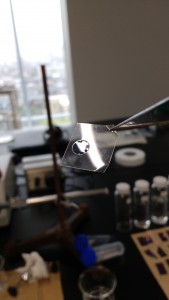
In addition to analyzing bulk samples of PA membranes with nanocomposites, we also want to create free standing films for FTIR. To do so I have been using overhead projector plastic sheets with holes punched to hold the film around the edges [Figure 1]. It certainly isn’t the most professional means of doing so but works nonetheless. The process in which I have been creating the unsupported films starts with pouring a small amount of the MPD aqueous (0.1% wt.) solution into a beaker. Since the density of the plastic sheet is about ~0.9 it floats on the surface of the MPD solution. Then a small amount of TMC/Hexane (0.1% wt.) solution is dripped on top of the sheet and set for a couple minutes to allow for the interfacial polymerization to occur. The plastic sheet is then grabbed with a tweezers and slowly pulled out; This is probably the hardest part of the process. I have to summon my inner surgeon to steady my hands so I can to slowly pull the plastic sheet up without breaking it. I have attempted this process over 50 times but only ended up with 5 membranes. Despite being a bit infuriating it has been plenty of fun too, kind of like a video game. Once the membranes were retrieved they has to be washed in water and ethanol to remove any excess MPD and TMC. I have done this process with MWCNT, graphite oxide and pure PA membranes. Based on the concentrations of MPD and TMC the films are thought to be around 100 nm thick! However this has not actually been measured yet.
We attempted FTIR on the samples but the signals were very weak and there was almost no different in the 3 different membranes despite having different nanocomposites. In addition to the weak signal there was an interesting beating pattern in the data. This leads us to believe that the films are a bit too thin and do have a high enough concentration of nanocomposite which is causing some interference effects and lack of difference between the films. To remedy these issues Next week we plan on increasing the concentration of the MPD solution to increase the thickness of the films and using more nanocomposite the signal difference is more visible.
Return to Top
Week 07: Overview of Mid-Program Meeting & Research Host Lab Visit
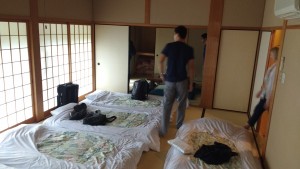
This weekend we were off to Kyoto for the Mid-Program Meeting. It was quite a long trip, about 5 hours, but a very beautiful ride through the mountains. It was great to meet up with of the other fellows again; we had a lot of fun catching up. We stayed at Kansai Seminar House which was on the outskirts of Kyoto. The guys room was a separate building and we got to sleep on tatami mats and futons.
The next morning, we went to Kyoto University to give our mid-program presentations and tour some of the labs. I was very nervous for my presentation despite it only being 5 min. I felt like it went alright and I survived – so all and all a good day. After a quick lunch and mixer with the Kyoto University students we toured some of their labs. It was interesting to see how they are trying to understand the brain using fluorescent markers. After returning to Kansai Seminar House we had a 4th of July barbeque. It was one of the best 4th celebrations I have ever had, and it wasn’t even in the USA!
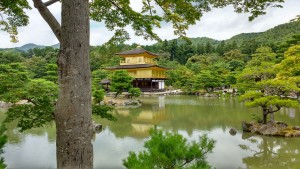
On Tuesday we had a cultural outing. We started our trip by going to a shrine where we learned all about its history. After, we participated in a traditional Japanese tea ceremony. The host made us each a cup of tea in beautiful handcrafted bowls. When making the tea, the host’s actions were very exact and controlled. It must have taken years to become so skilled. Once the ceremony had concluded we walked to Kinkaku-ji, the golden temple. I was surprised that the gold exterior is still in such good shape. It made me wonder if it has been restored more recently. We were given some time to wander the ground and some of us got a great guided tour from Packard-san. Once we got back to the Kansai Seminar House we got dressed in yukatas and played with fireworks. Some of us attempted to spell our “NK16” with sparklers. It didn’t really work out but we set a challenge for the students next year.
Finally, on Wednesday, the last day of the trip, we went to Sysmex Techno-Park. We learned a lot about the advancements that they have made in bioengineering. Their grounds were as amazing as their lab space. Much of the landscaping was designed to help the researchers look at things from a different perspective, which I thought was very creative. Inevitably, the trip came to an end and we all went our separate ways.
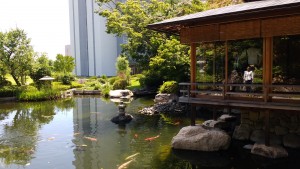
Both the greatest impact and the biggest struggle on this trip was relaxing. It was nice to take a step back and enjoy a couple of days with everyone but there was always a nagging feeling in my mind that I was getting behind. What I think made it hard to shake was that I knew once I return I have to put in 100% effort (I originally had “kick it into high gear”) for the next month to complete what we want to accomplish.
Once I returned to Shinshu, I had my lab tour with Prof. Kono, Sarah-san, Packard-sensei, Endo-san, and Ogawa-san. First we met with Endo-sensei. It was great to see him again. He’s always very kind and inviting, which is not what I expected from such a famous person. He mentioned writing a paper with Rodolfo-sensei which made me a bit nervous because I had not heard about doing so before then. I think he may have meant he hopes I can write a paper but I’m not sure. It was great to have more one on one time with the Nakatani team to talk about my research as well as how the rest of the program will go, such as the poster presenting.
Question of the Week
Why are Japanese people so helpful? Every time I have asked for help on anything people see to go out of their way to help. Is this normal? Is it something that is in Japanese culture, or have I just been really lucky?
Research Project Update
This week I continued creation of the bulk samples of membrane as well as investigating the issues with FTIR when using the very thin films. As for the bulk film creation, I had a bit of a setback. The pure PA membrane began to turn brown, which shouldn’t happen if it were clean. This lead us to believe the there was still a fair amount of MPD in the sample because when it oxidizes it also becomes a similar color. Therefore, I worked on making a new sample using a slightly different method. Instead of rinsing and filtering the PA membrane, we would rinse and then put the solution in the centrifuge to separate the membrane. The membrane was rinsed and spun three times, leaving us with a much cleaner looking membrane, and so far it hasn’t oxidized!
As mentioned in last week’s report, we were getting some interesting results from the FTIR of the free-standing membranes. We also noticed that the spectra of the plastic support (PET) was oddly similar to that of the membrane with the main difference being the magnitude. After researching a bit more about the atomic structures of both the PA membrane and the PET plastic support, we see that they have very similar structures. Specifically, both have aromatic rings. Now that the issue is cleared up, in the next month we plan on increasing the concentration of the carbon structures to amplify the differences between the membranes.
Return to Top
Week 08: Research in Japan vs. Research in the U.S.
What I learned about research in Japan during the orientation has pretty accurately described my experience with Japanese students, professors, and researchers. There is a pretty rigid and visible hierarchy that is based on both age and position. However, I mostly work with non-Japanese researchers, so I have seen some very interesting working dynamics between the two. Working with the non-Japanese researchers has been very helpful in learning where my place is in the hierarchy and how to navigate the “system” because, they have lived in Japan for many years and know what it’s like to be in my situation.
In the past month I have seen much of the strict hierarchy and where it meets non-Japanese people. In Hayashi-sensei’s Lab, it is just as we learned. The younger students use more formal language, particularly when speaking with the graduate students and professors, as well as dress in business casual. The graduate students use more casual language and dress anywhere from casual to leisure clothes. On a bit of a different note, in the COI building, the building where Rodolfo-sensei works, there are mainly post-docs and researchers. The Japanese researchers use fairly causal language, with age being the main indicator of rank from what I can tell. However, this appears to be broken with the non-Japanese researchers. It has made it hard to tell who is actually in charge. Of course, Endo-sensei is ultimately in charge, but in the group I work with I seems like Rodolfo-sensei is somewhat in charge. The reason I believe this is because the other researchers all ask him to order supplies, but besides that he isn’t involved in everyone’s research. I could be that it is an oligarchy but I don’t know for sure.
The major difference that I have felt between research in Japan and America is in the amount of guidance. In America, our group would meet with our professor 2-3 times a week to give updates and talk about where we need to go from there. It was very structured but we did have some room to try our own ideas as well. On the first day I was set free to use almost all of the basic equipment and I was given a general Idea of what we wanted to do. From there it has been trying many of my own Ideas and discussing the results with my professor. I like the freedom I have in my lab in Japan, but it’s not always easy to know what you are supposed to be doing and to stay on track. I prefer a little more instruction and guidance, mostly because I don’t know that much about this field yet.
Question of the Week
I met some students last weekend and they looked like high school students but were in fact doctoral students. Why do Japanese people seem to look so much younger? Is it genetic? Lifestyle? Diet?
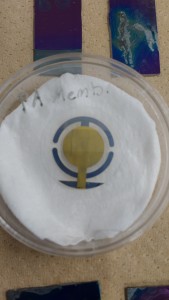
Research Project Update
This partial week I worked on finishing some of the bulk membranes and preparing for the following week’s experiments. I began setting up for synthesis for PA membranes on quartz crystals so we can use a Quartz Crystal Microbalance (QCMB) to measure the weight per area in different environments. Next week we plan on using an approximately 0% humidity chamber and a very humid chamber (yet to be determined). We want to experimentally look at how the membranes saturate in different environments. It is important because the more saturated a membrane can become, the easier it is for salt to pass through using the water pockets as gateways. In a paper from Shinshu University, they found computationally that the addition of nanostructures lowered the membrane’s saturability. This is what we are trying to experimentally confirm.
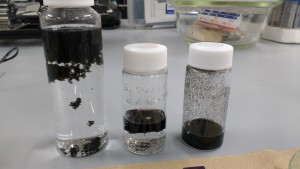
I am trying to disperse DWCNT in an ethanol/water solution (5 parts ethanol to 1 part water) and in Hexane. We don’t want to use high energy sonication because it could damage the DWCNT and we don’t want to use a surfactant because it could interfere with the polymerization. I have tried using low energy sonication for almost an entire day, but within seconds of taking it out the nanotubes begins to clump. Are there any other tricks that could be used that wouldn’t damage the nanotubes or affect the polymerization?
I talked with Rodolfo-sensei about what we need to accomplish in the coming weeks, so I have made a more accurate and detailed schedule. We have focused in on 2 or 3 carbon structures to perform all of the experiments with. We will be making pure PA membranes and PA with DWCNT, MWCNT, and possibly SWCNT.
Return to Top
Week 09: Reflections on Japanese Language Learning
Learning Japanese this summer has been up and down for me. Because of the situation I am in here at Shinshu, I could get away with never really using Japanese. However, I have been trying my best to speak Japanese when I can as well as independently studying vocab and kanji. Some of the other researchers, who speak English and Japanese, have been helping me as well by trying to communicate in a very low level of Japanese. I have really appreciated how they have gone out of their way to help me. Additionally, whenever I try to speak to the researchers who don’t really know English, I try to use as much Japanese as possible.
One of the biggest challenges I have faced is traveling alone. When I have an issue I have no one to turn to but the people around me (often times the JR employees). They have been nothing but helpful, but often times don’t know too much English. This has made it particularly difficult to communicate more complex ideas such as detail about Shinkansen tickets. I have managed and they have dealt with me. Dealing with the stress of a soon departing train while trying to communicate in Japanese has made me more confident in using Japanese even if I’m not sure exactly how to say what I want to get across.
I had always wanted to learn Japanese but there were never any easily accessible classes. Neither my high school nor Bethel University offer Japanese classes and I have never looked much further. Now that I have had a crash course on Japanese and experienced life in Japan, I want to learn it more than ever and have begun looking for other options.

Research Project Update
This week, most of my efforts have been focused on the hydration testing using the quartz crystal microbalance (QCM). We changed the experiment slightly because of two main factors: (1) the humid jar was presumed to be too humid, thus causing some problems with the data collection system, and (2) the rate at which the thin films dry is much too fast for the equipment that we have to capture. Nevertheless, we will still be able to use the data we collect because it will show how much water each membrane can absorb in a known humidity. We are doing this by starting with the film in the ambient air, which is around 60% humidity. After a 10 min baseline, the apparatus is placed in the “dry” jar that is filled with P2O5 for 20 min to allow the membrane to acclimate to the drier environment. Finally, the film is set back in the ambient air for another 10 min.
Unfortunately, this week we have been having some issues getting the . The main issues are that the program crashes occasionally with an error message saying that the program has timed out. The error still appears when I am actively interacting with the program, so we are not sure what is causing it. Despite that, we have been able to take a fair amount of data over the course of the week.
Week 10: Interview with Japanese Researcher
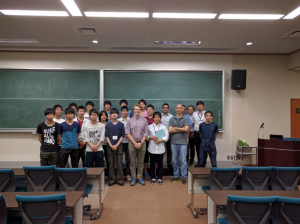
This week I interviewed Takuma Koizumi. He is a first year master’s student at Shinshu University studying carbon nanoscience. His specific project is using carbon nanotubes to create supercapacitors. He is pursuing this field because he has always been interested in making applicable things, and carbon nanotube research is state of the art at Shinshu University.
We were able to talk a lot about what it is like to be a college student in Japan vs. America. One of the biggest differences I noticed was what he thought about his time in university. He said that being a university student, specifically an undergraduate, in Japan was the time that you can do whatever you want in your life. He said it was much more relaxed and less difficult than high school. This is reversed from my own experience where high school was more laid back than college in terms of difficulty. However, we also talked about how this may not be true for everyone in both America and Japan. Another big difference that we discussed was how research was built into the undergraduate programs in Japan. We talked about how many students in America also do research during their undergraduate program, but it is more so out of their own volition rather than mandatory. However, it seems like Japanese students have much more freedom or rather less direction from their professor than I have experienced.
Even though Takuma is in his master’s program, he still isn’t sure what he wants to do after graduation yet. He is, however, sure that he wants to go into industry rather than continuing to a Ph.D. Specifically, he would like to take part in manufacturing of sorts that can make the world a better place. Additionally, he would like his work to be globally oriented so he can improve his English. His English is already really good, partially because he uses it so often. Five of the people in his lab are international students, and he spent two and a half years in America while he was in elementary school.
Research Project Update
This week has been focused on the hydration tests which I have described in the previous week’s report. Even though we moved the QCM setup inside an enclosure to help combat air currents and local humidity and temperature changes, we still are having issues with the humidity and temperature drifting enough to render a day’s worth of testing invalid. All of the on and off rain in Nagano, and the fact that the lab is a water filtration lab, has made it very hard to keep a constant humid and temperature as well. It would be nice to have two QCMs so we could run the two membranes at the same time and expose them to identical conditions. Through all of my trials, I have noticed that the temperature and humidity are the most stable at night. I think this is because there is no one else performing experiments involving water, or going in and out of the lab letting the humid and warm air in from the hall. I started staying late to test this further.
Even with small changes in the humidity, I have noticed that the pure PA membrane has yielded fairly inconsistent results when compared to the PA+MWCNT membranes. I don’t think this is an effect of them MWCNT in the membrane because I have noticed some defects in the Pure PA membrane on the quartz crystal. This next week I plan on creating new membranes to see if this is an effect of the defects in the Pure PA or the MWCNT.
Return to Top
Week 11: Critical Incident Analysis – In the Lab
This occurred near the beginning of my time at Shinshu University. Before arriving, I had asked my lab’s secretary, Kurata-san, if there were any language classes I could take. Upon arriving she told me there were no classes at my level available on campus but there were volunteer Japanese classes which were offered Tuesdays and Thursdays from 10 am to noon. I talked with Rodolfo-sensei to see if it was alright to take the classes and he agreed. He told me that the specific times I was in the lab didn’t matter too much, just that I get my 40-ish hours in each week.
On the first day of class, Kurata-san drove me to Monsan plaza and helped me get signed up for the class. Once I was finished, we talked over the phone and she instructed me how to get back to Shinshu university; she even met me at the bus stop next to the school! The following Thursday I went to the Japanese class on my own using the local bus. Later that day when, I saw Kurata-san, she asked me if I went to class today. I told her yes and thanked her for helping me. Then she asked me if I was going next Tuesday and again I replied yes. After which she asked if I had gotten an e-mail from Packard-san, which I hadn’t. I didn’t think much of it and thought maybe I’ll get something from her later. The following Monday she asked me again if I was going to class on Tuesday and again I replied yes. After which she asked again If I had gotten an e-mail from Packard-san, which I still hadn’t. Once she left, one of the other researchers helped me put the pieces together. I then emailed Packard-san about the situation I was in and we had agreed that the language classes were a big commitment and was not the main focus of my time here.
At the time I was very excited to continue learning Japanese because I really like the language and I thought it would help me work with the other research better. I didn’t give too much thought to the time because I would just stay late on those nights. It’s clear now that Kurata-san had my and the lab’s best interests in mind. She didn’t want the classes to take me out of the lab every Tuesday and Thursday morning.
Sadly, I didn’t pick up on Kurata-san’s hints that I shouldn’t continue the classes until she had already contacted Packard-san. I think what made it the hardest to realize we were misunderstanding each other was that she had gone so such great lengths to set everything up so I could take the class. From this experience I learned a bit more about Wa (harmony) first hand, and to be careful what you ask for.
Research Project Update
This week has been a good week here at Shinshu! After many hours or running hydration tests of the PA membranes and PA+MWCNT membranes we finally have some promising results. For a while we were worried that we might not see anything because the computational findings suggested that the difference in relative hydration would be less than 10%. Working off of suggestion from Dr. Einarsson, we changed the test to allow the membrane to dry out as much as possible. We found that after about 50 min of drying the saw that the membranes have little to no change in frequency so we used it as a dry baseline. After the 50 min drying session the membrane was exposed to the ambient air which was about 64% humid. Although we were in a lab, there were still fairly large fluctuation in humidity. We remedied this issue by putting the test in the enclosure that I mentioned in the previous weekly reports and by running the tests during the night when the temp and humidity were the most stable. We finally were able to collect data with a stable enough humidity level to have a potentially valid test. All of the tests within about 1% humidity of each other. Although the actual frequency changes of the two different membranes are fairly different [Fig 1], when we divide by the frequency change of the crystal due to the addition of the membrane we see a much closer gap [Fig 2]. We are looking at the relative frequency shift rather than the raw because the membranes are of significantly different mass (The membrane with MWCNT is 2-3 times more massive). All and all our preliminary data shows about a 6% difference in relative frequency!
We also have started a new experiment using the CQM to test the surface crystallization on the membrane. This doesn’t have too much to do with the hydration of the membrane but should yield some interesting results about the antifouling properties nonetheless. We are using the QCM crystal holder as a dish for a CaCl2 and which will form calcium crystals on the surface of the membrane. This issues we have run into is that this reaction is fairly slow and our instrumentation has a knack for crashing within an hour.
Week 12: Final Week at Research Lab
My perception of Japanese cuisine has changed quite greatly. I had originally thought that sushi was a very commonly eaten food, but in reality it is more of a gourmet dish. Additionally, I never really thought about the scale, out of necessity, of the public transportation required in Japan, especially in Tokyo. On the flip side I never realized how inconvenient somethings in America actually are, such as convenience stores!
The most common frustration was that everyday had its own set of little challenges. These ranged from trying to describe complex ideas with a fairly strong language barrier, to trying to figure out which of the thousands of tubes at the store was toothpaste. This was exhausting, but made every day a gratifying adventure in its own way. Among these challenges, was one great solace; convenience stores which I described earlier. I will never think of convenience stores the same way because American “convenience” stores are not actually convenient. This is something I will really miss about daily life in Japan. However, on a more serious note, I will miss the lab I worked in and the friends I made at Shinshu University.
Until now, I wasn’t too sure I was going to continue to graduate school or what area of research I would like to pursue. However, through my experience this summer I certainly made up my mind that I will continue to graduate school and would like to potentially pursue a career in nanoscience. Additionally, I have become much more interested in chemistry. The last time I had actually taken a formal chemistry class was in high school; It was a fun class, but it wasn’t what I wanted to do. Now that I have experienced what it is like to work in an applied chemistry lab, and have talked with my mentor who is very passionate about chemistry, it seems much more appealing to me.
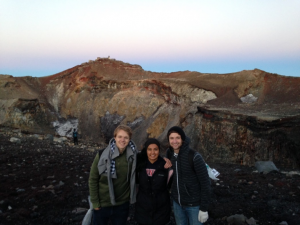
The final week of lab was quite hectic. I spend the majority of the week analyzing data and preparing plots and figures for my poster. This doesn’t seem like it would be too hard, but formatting a poster turned out to be quite difficult! Since I was essentially part of two different lab groups, a student lab and a researcher only lab, we had two goodbye parties. For the first with the students, we went out for the night to get dinner and hangout one last time. The official lab party, however, was much more formal.
We closed our research with some promising results! My mentor and I plan to stay connected and he will continue the research with the apparatuses that I built. He will collect much more data so we can much more confidently say that there is a difference in hydration of the films with carbon nanotubes, as well as improve the repeatability of the hydration experiment via controlling the temperature and humidity much more closely.
The following weekend we climbed Mt. Fuji to see the sunrise. My mentor told me it was an easy walk…… I realize that this must have been a joke because it was ~7 hours of pain. Never the less it was worth it to see the sunrise at the summit!
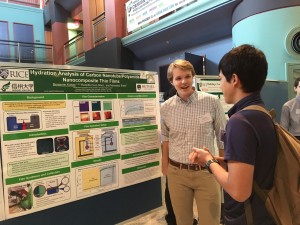
Final Research Project Overview
Research Project Abstract and Poster: Hydration Analysis of Carbon Nanotubes/Polyamide Nanocomposite Thin Films ![]()
Host Lab in Japan: Endo Lab, Shinshu University
Since the scarcity of clean water has become a hot topic recently, a lot of research has gone into desalination technology because salt water is very abundant on earth. The current Industry standard for desalination is Polyamide (PA) Reverse Osmosis (RO) thin films because they have many attractive properties such as high salt rejection, high water flux, and relative robustness. However, they have a limited lifespan due to low oxidant tolerance and high fouling rate. Like many problems, carbon nanotubes seem to play a role in the solution. In this case, the addition of carbon nanotube to the PA films has been shown to improve water flux, oxidant tolerance, anti-fouling properties, and increase salt rejection. There has been much research conducted into the improved properties, but very little experimental evidence into the mechanism that causes these improvements. A computational/theoretical paper published at Shinshu University suggested that the improved salt rejection was caused by the carbon nanotubes acting as a support structure for the film to grow from. Since ions, in this case sodium and chlorine, can use water pockets in the film as a means of traversing the film, a denser membrane, having fewer and smaller water pockets, would make it more difficult for ions to pass. To test this, we set out to examine the density change of PA films with the addition of carbon nanotubes upon hydration.
We started by making an apparatus for automatic lab scale-dip coating of the PA membranes. This was done in a bit of a “MacGyver” way with a syringe pump and lab stands. The pump was held upside down at a 45-degree angle using lab clamps and an arm, for securing the substrate, and was attached to the part of the pump that pushed the syringe.
Now that we had a method for making the membranes, we made an apparatus for testing the density changes. This was done with a quartz crystal microbalance, which consisted of a crystal that was stimulated to resonate. When a substance is applied to the surface of the crystal, its frequency shifts due to the damping, which is proportional to the mass change. Using this, we collected frequency shift data of the crystals when the PA membranes were applied, giving us the mass of the membrane. Then we collected frequency data of the membranes while they were hydrated, essentially giving us the mass of the water absorbed. We then divided the frequency change due to the hydration by the frequency change due to the membrane. This gave us the relative frequency change and from that we knew the relative mass change of the membrane which we compared.
We found that, relative to its mass, membranes with MWCNT hydrate about 5% less than those without. The computational/theoretical findings suggested a 10% reduction in hydration and although we didn’t reach the theoretical potential, it is still promising to see that there was a reduction in the hydration. Going forward, we would like to use different carbon nanostructures such as single walled carbon nanotubes and double walled carbon nanotubes for the hydration test. Additionally, more controlled humid and dry environments would help reduce the experimental error.
Week 13: Final Report
Finally, after 3 months in Japan, we took a 13-hour flight back to America. I had mixed feelings on returning back to my home country. I was glad to be back because soon I would be able to see my family, friends and HTC Vive in Minnesota, but I had to say goodbye to Japan and soon after the other Nakatani fellows I had gotten to know so well. However, we got one last half week in Houston to re-adjust to a different time zone, as well as spend time with the Japanese fellows who had just arrived in America.
During our time in Houston, we started our time off with lectures on our cultural experience, applying for graduate school, and poster design/presentation. I really liked this part of the program because it wasn’t just a great experience to go to Japan, we were also taught how to use this experience to market ourselves more effectively and be the best prepared we can be for applying to graduate schools, searching for jobs or future summer opportunities. What helped me the most was the talk about actually applying to graduate schools because I never realized how much actually went into the application process. I thought the applications would be like undergraduate where one just submits an application and maybe an essay. However, there is so much more that I know I need to start preparing for.
For the Nakatani Fellowship capstone experience, we presented our research at the Smalley-Curl Institute (SCI) colloquium on our third day back in Houston. It was the first time I had ever created a poster or presented anything in that type of academic setting. I really enjoyed presenting because it wasn’t as daunting as a formal presentation. It felt much easier to talk one-on-one or with a small group that would give feedback and ask questions as I presented. I hope I have the opportunity to do many more poster sessions as I really enjoyed the experience. Additionally, at the colloquium, I was able to say, “hi” to Dr. Robert Curl! It was such an honor to meet a Nobel Prize winner in person.
With all of the amazing intercultural experiences of the summer behind us, we were able to enjoy our last couple of days in Houston with all of the 2016 Nakatani fellows from the U.S. and Japan. We went to dinner a couple times and explored Rice Village, a shopping center, together. However, the most amazing place we went during our time in Houston was NASA’s facility, Space Center Houston! I had always dreamed of seeing the Saturn V rocket, which took the Apollo missions into space and landed the first men on the moon. It was so exciting to bask in its glory (and touch it….). Its main engines were so much bigger than I imagined from seeing them on television. It helped to bring some of the space history I had read about to life.
Altogether, this summer was an outstanding opportunity of a lifetime. I was able to experience the incredible country of Japan and conduct meaningful research. This tied two of my passions into one amazing program! However, this program was so much more than that to me. I was able to experience a very international environment and learn as much about myself and my own culture as I did about others. Even talking with the U.S. fellows, I learned that so many phrases or habits I thought were American things, were actually just Midwest/Minnesota things such as calling carbonated beverages pop instead of soda. Not only did I learn about myself, but I made some of the best friends I have ever had and I hope to remain in contact with them.
This summer has really helped me decide what I want to do with my life. My mentor, Dr Rodolfo Cruz-Silva, always seemed so excited about what he was doing and it made it easy for me to be as well. I really enjoyed the research I was doing and I am now sure that I want to go to graduate school, potentially in nanoscience/water filtration. Additionally, I would really like to return to Japan sometime in the future, potentially for graduate school. To do so, I need to learn more of the Japanese language, but my school doesn’t offer it as a program of study. However, I have found an alternative; my friend’s mother has agreed to tutor me this year in learning Japanese. She is originally from Japan and is also a teacher. I am really looking forward to increasing my Japanese language skills through these tutoring sessions.
I would like to thank the Nakatani Foundation and Rice University for sponsoring this amazing program and selecting me to be a part of it. It has changed who I am as a person, a student, and a researcher in very positive ways.
ありがとうございました。
Follow-on Project
For a Follow-Up Project I will be giving a short/semi-informal talk to the Bethel Physics Department. We have these talks every Tuesday and they are open to professors, students, or guest speakers. Although, I will mainly be talking about the research I did this summer I will also talk about the Nakatani RIES Fellowship and how it affected my life.
Return to Top
Tips for Future Participants
- Pack light! I packed one suitcase and came back with two. Keep in mind that you might be bringing quite a bit back with you in the form of gifts and souvenirs.
- Plan enough time when traveling for a couple of missed trains.
- Don’t eat out every night, shopping for food from the grocery store can cut the cost of food dramatically!
- If your mentor or professor tells you that climbing Mt. Fuji was an easy hike, realize that it was a joke.
- For lab gifts, just about anything from your local area is good. A specialty food, that won’t melt in the Texas or Tokyo, is always a good option.
- Get some real Japanese ramen!!!
- A great weekend activity is visiting fellows in other cities (such as whoever might be in Nagano)
- One of my favorite place to go was Togakushi, which in in the mountains of Nagano
